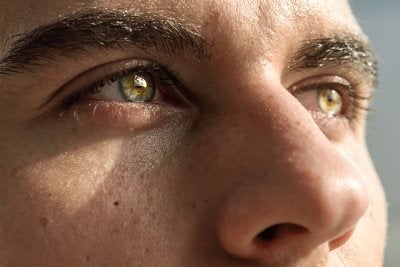-
The Truth About Glaucoma Symptoms
Some eye conditions are obvious, but others require the help of an eye doctor in Chicago to diagnose. Even those who practice excellent eye care may run into certain eye health issues, so it’s wise to maintain a working relationship with your ophthalmologist. Glaucoma is one eye condition that can compromise your vision and ultimately change your quality of life. You might not notice signs of the disorder on your own, but your professional will be able to detect its presence. Read on for the real truth about glaucoma symptoms.
Glaucoma symptoms are tricky because they don’t always exist. In fact, many people with glaucoma don’t experience any symptoms at all until the disease progresses. Those who do notice symptoms of this condition may experience blurred or distorted vision. As the disease progresses, you might experience vision loss as well. Angle-closure glaucoma is a rare kind that may cause nausea and eye pain. Since there is no cure for glaucoma and you might not actually experience symptoms, it’s extra important that you visit your eye doctor for screenings. Your ophthalmologist can check for signs of glaucoma, and he or she can devise a treatment plan if you appear to have the disease.
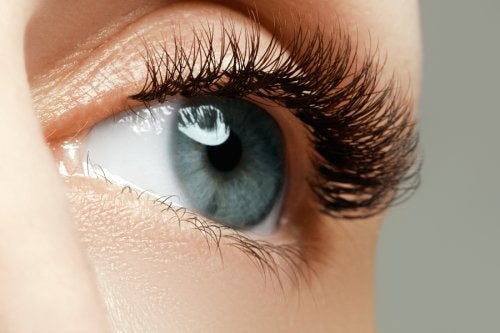
-
May is Healthy Vision Month
Although you should practice proper eye care every day, May happens to be Healthy Vision Month. The purpose of this campaign is to raise awareness about the importance of eye health and teach people how they can keep their vision sharp for the rest of their lives. In order to stay on top of your eye health, you should know a little bit about your family history and what you might be susceptible to. Do your best to protect your vision when you’re out and about, and see your eye doctor in Chicago for routine checkups. May is Healthy Vision Month, so continue reading to learn about the principles it focuses on.
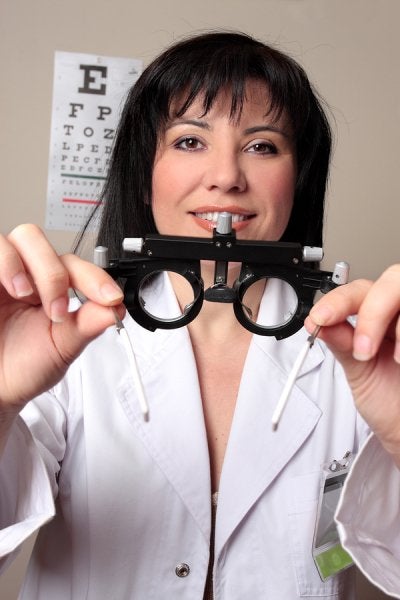
Know Your Family History
You are who you are thanks to nature and nurture, and both of these constructs play a role in your eyesight as well. Some of the traits that make you who you are will have been passed down through your bloodline. For this reason, it’s a good idea to know what kinds of health issues run in your family. Just like heart disease and bipolar disorder, eye conditions can be hereditary. Celebrate Healthy Vision Month by learning about your family’s eye health.
Protect Your Eyes
Your eye doctor wants the best for your eyes, but you need to do your part to keep your vision sharp. Overexposure to ultraviolet rays can have a negative impact on your vision and even lead to eye health issues. When you go outside, be sure to wear sunglasses that block out ultraviolet rays. It’s also a good idea to stay in the shade, and you can even wear a hat for extra coverage. The better you protect your eyes, the happier your eye doctor will be during your next visit.
See Your Eye Doctor
Proper eye health is a team effort, so you can’t handle it alone. Your ophthalmologist knows what’s best for your eyes, and he or she can screen you for diseases that you might not catch yourself. If you haven’t seen your eye doctor lately, take the opportunity to make an appointment during Healthy Vision Month.
-
The Link Between Diabetes and Glaucoma
After you have been diagnosed with diabetes, your ophthalmologist will be an important member of your diabetes care team. This is because your disease places you at risk of eye health complications, including glaucoma. People with diabetes are thought to be twice as likely to develop open-angle glaucoma compared to non-diabetics. Interestingly, people who already have open-angle glaucoma are at a higher risk of developing type 2 diabetes compared to people without glaucoma. At an optical center in Chicago , diabetic patients can undergo testing for glaucoma. The sooner glaucoma is detected and treated, the better the outcome will be. Your eye doctor may ask you to return to the optical center for routine exams more frequently than patients without diabetes.
In addition to getting your vision checked regularly, you can protect your eye health and systemic health by following your primary care physician’s diabetes management guidelines. You may be asked to take oral medications or injected insulin to control your blood sugar levels. Lifestyle changes like careful meal planning and regular exercising are other essential ways to reduce the risk of diabetes-related complications like glaucoma.
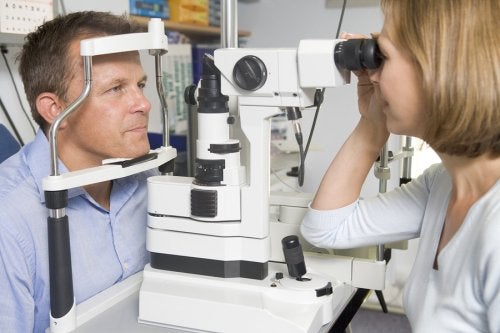
-
The Importance of Diagnosing Glaucoma Early
When was the last time you visited an optical center in Chicago to have your eyes checked by an ophthalmologist? According to eye doctors, you should have your eyes examined every 2 to 4 years if you are under age 40. This rate increases to every 1 to 3 years from age 40 to 54, every 1 to 2 years for ages 55 to 64, and every 6 to 12 months for individuals ages 65 and older.
Diagnosing glaucoma early is an important part of eye care because this condition can result in permanent damage to your vision. Glaucoma is a group of eye disorders that cause progressive damage to the optic nerve. When left untreated, glaucoma can lead to permanent loss of vision and blindness.
Glaucoma causes increased pressure in the eye that damages the optic nerve and is the second-leading cause of blindness in the United States. When caught early, glaucoma can be treated to stop or slow the progression of damage to the eye and preserve the patient’s vision.
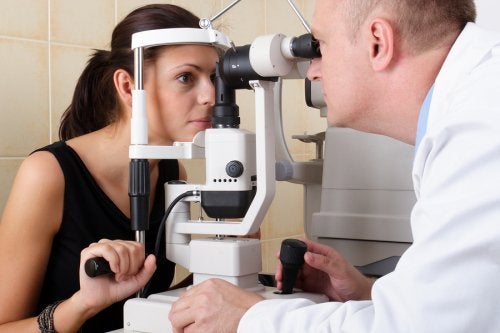
-
Preserving Your Eyesight After Being Diagnosed with Glaucoma
While eye care is important at all stages of life, it becomes even more critical after being diagnosed with glaucoma. If your eye doctor in Chicago has informed you that you have this condition, then continue reading to learn how to help preserve your eyesight.
Glaucoma is typically a result of pressure that builds up in the eye and causes damage to the optic nerve, which is responsible for transmitting information to the brain. As the optic nerve deteriorates, so does vision. For this reason, glaucoma can lead to blindness in just a few years if not treated by an eye doctor.
Diagnosing glaucoma early and being treated by an ophthalmologist are key to preserving your eyesight when you have this condition. For this reason, it’s important to see your eye doctor regularly for checkups and to adhere to your treatment plan. Some of the treatment options for glaucoma include microsurgery, laser surgery, and medicated eye drops.
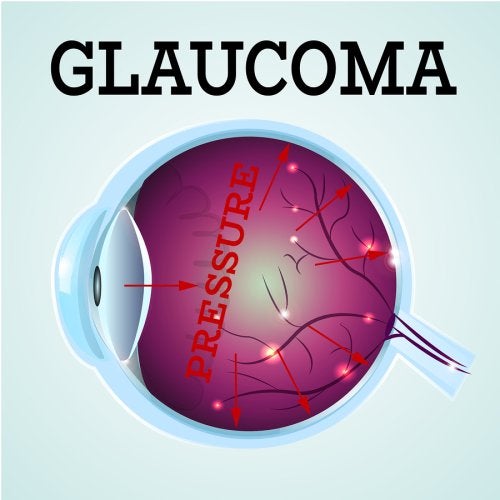
-
What Are the Risk Factors for Glaucoma?
When was the last time you visited your optical center in Chicago to have your eyes tested for glaucoma by an eye doctor? If it’s been more than a couple of years, then you could be overdue for a screening. Read on to learn what puts you at greater risk for developing glaucoma.
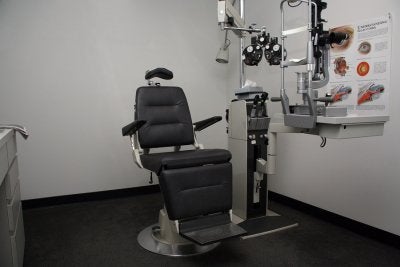
Age
Individuals over 40 are at a higher risk for both open-angle glaucoma (OAG) and closed-angle glaucoma (CAG), and your age impacts how frequently you should be seeing an eye doctor for testing. People under age 40 should visit an eye care professional every 2 to 4 years. From ages 40 to 54, see your eye doctor every 1 to 3 years. Individuals who are between ages 55 and 64 should have their eyes tested every 1 to 2 years. Once reaching 65 years of age, people should visit their eye doctor once every 6 to 12 months.
Race
Race has been linked to different types of glaucoma. People of African descent are at a higher risk for developing OAG than Caucasians, and people with East Asian ancestry are more likely to suffer from CAG than other individuals. Also, Hispanics in older age groups are at a greater risk for glaucoma. If you fall into one of these high-risk groups, then consider seeing your eye doctor more frequently.
Family History
OAG is the most common form of glaucoma, and both it and CAG are hereditary conditions. This means that if you have immediate family members who suffer from glaucoma, that you should be seeing an eye doctor for testing more frequently than you would otherwise because you have a much greater risk of developing the disease.
Other Factors
There are several other factors that can increase your risk for open-angle glaucoma which include having high pressure in the eyes, having diabetes, and having prior loss of vision due to glaucoma. Additional risk factors for closed-angle glaucoma include being female, having farsightedness, and having CAG in one eye. If any of these risk factors apply to you, then speak with your ophthalmologist about how often you should have your eyes checked for glaucoma.
-
A Look at the Three Types of Glaucoma
Are you wondering if you need to see an eye doctor for vision correction in Chicago because of your deteriorating eyesight? If so, then you may benefit from knowing more about glaucoma, which refers to several eye diseases that affect the optic nerve. Continue reading to learn about the types of glaucoma.
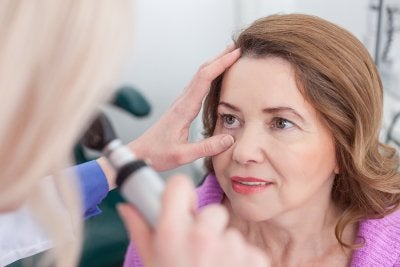
Open-Angle Glaucoma
The most common form of glaucoma in the United States and Canada, open-angle glaucoma (OAG) is characterized by worsening sight in both eyes that usually occurs slowly and even unnoticeably. In the case of OAG, the symptoms develop so slowly that it’s not uncommon for them to go unnoticed until the person’s vision is severely deteriorated. Often, this is because one eye can be more affected than the other and the one that’s in better condition makes up for the discrepancy. With open-angle glaucoma, peripheral eyesight tends to deteriorate before the central vision.
Closed-Angle Glaucoma
Less common in the United States and Canada than OAG and affecting only one eye, closed-angle glaucoma (CAG) can come on suddenly and can even result in a medical emergency. However, CAG symptoms can also be mild and can cause blurry vision that comes and goes and is short-term. When severe, the signs of CAG can include episodes of blurred vision that last for longer periods and can include pain that’s felt around or in the eye. Some other symptoms of closed-angle glaucoma include nausea, red eyes, and seeing colorful halos around lights. If you notice that your vision is suddenly blurry, see an ophthalmologist at an eye care center right away.
Congenital Glaucoma
Occurring in infants at birth and sometimes in children and young adults, congenital glaucoma is the rarest type of this eye disease. An individual suffering from this condition may have symptoms that include eyes that water a lot and are sensitive to the light. If a child has congenital glaucoma, you may notice that she often squints, closes her eyes, or rubs her eyes. If you notice these behaviors in your baby, she should be seen by an eye doctor as soon as possible.
-
Are You at Risk for Glaucoma?
Glaucoma is a common cause of irreversible vision loss. This group of eye diseases, which inflict damage on the optic nerve, does not result in symptoms in the early stages. This is one reason why an ophthalmologist in Chicago may speak with you about your risk factors. If you are at a high risk of glaucoma, your ophthalmologist can explain the screening tests that are available at the optical center. One major risk factor is your family history. Having a parent or sibling who has been diagnosed with glaucoma can increase your own risk substantially. Be sure to update your personal and family health history each time you visit the eye doctor.
Another significant risk factor of glaucoma is your age. Your risk increases with each birthday, particularly when you reach your 40s and beyond. Individuals with severe nearsightedness are also at an increased risk of glaucoma, as are those who are of African, Hispanic, or Asian heritage. Patients with type 2 diabetes may already know of their risk of diabetic retinopathy, but they’re also at an increased risk of glaucoma, especially if they’ve had diabetes for a long time.
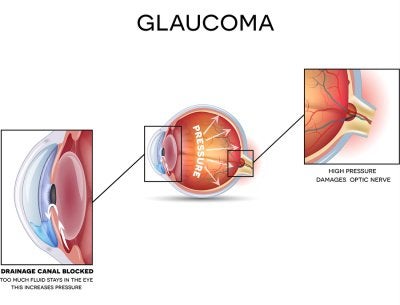
-
The Importance of Glaucoma Screening at Age 40
Glaucoma refers to a cluster of eye diseases that inflict damage on the optic nerve, resulting in vision loss and perhaps blindness. Glaucoma is typically characterized by increased intraocular pressure, which can occur when fluid accumulates within the eye instead of being drained away. The optic nerve can sustain damage when this pressure builds up. Although glaucoma is a serious eye disease, the good news is that your ophthalmologist can detect it early and recommend effective treatment options to manage the problem. You can facilitate early detection of glaucoma by scheduling a screening at an optical center in Chicago.
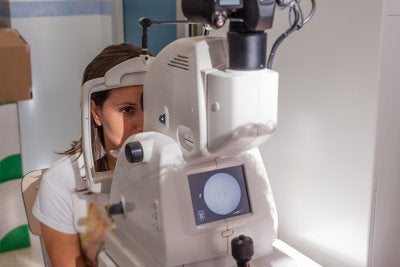
Why You Should Get Screened
Many adults resist going to an ophthalmologist for an eye exam because they think that their vision is fine or that their prescription hasn’t changed. But in fact, eye diseases can develop without causing noticeable symptoms. Only a comprehensive eye exam at an optical center can lead to an accurate diagnosis. Taking an hour or so out of your day to undergo a glaucoma screening is a worthwhile investment in your health. Another important reason why you should get screened is that when left untreated, glaucoma can gradually rob you of your eyesight. When detected and treated early on, glaucoma is quite manageable.
When You Should Get Screened
The reason why it’s important to get screened at age 40 is because this is the time of life when eye diseases and other problems typically begin to develop. Even if your vision appears to be perfect, you could be developing asymptomatic problems like glaucoma. Your ophthalmologist will recommend a glaucoma screening schedule for you to follow. Generally, it’s recommended that patients ages 40 through 54 have a screening every one to three years. Those who are 54 to 64 should have one every one to two years and those who are older than 64 should have one every six to 12 months. Your ophthalmologist may adjust this schedule depending on your specific risk factors of glaucoma.
What Your Risk Factors Might Be
Ask your ophthalmologist if you’re at an increased risk of glaucoma. You may be if you have a family history of the disease, you’re age 40 or older, you have high intraocular pressure, or you are farsighted. People with diabetes, high blood pressure, a history of eye injuries, and a history of corticosteroid use are also at an increased risk.
-
What Glaucoma Does to the Eyes
If your ophthalmologist near Chicago has diagnosed you with glaucoma , you may be wondering about the nature of this condition and how it will affect your vision and eye care. Different patients can experience glaucoma in different ways. In most cases, this disease affects peripheral vision first. As glaucoma progresses, it can cause you to experience tunnel vision as your peripheral vision continues to deteriorate. While some people maintain their central vision, this can also be damaged by glaucoma.
Eye doctors aren’t certain about why glaucoma causes damage to the optic nerve but for many patients, an increase in pressure in the eye seems to be involved. Your eyes produce a watery fluid called aqueous humor that, in healthy eyes, drains out and into the bloodstream. Because of a malfunctioning drainage system, the fluid fails to drain properly in some individuals, resulting in an increase of pressure in the eye. Some ophthalmologists believe that this condition may be the cause of the optic nerve damage and resulting vision loss that occurs in glaucoma patients.
